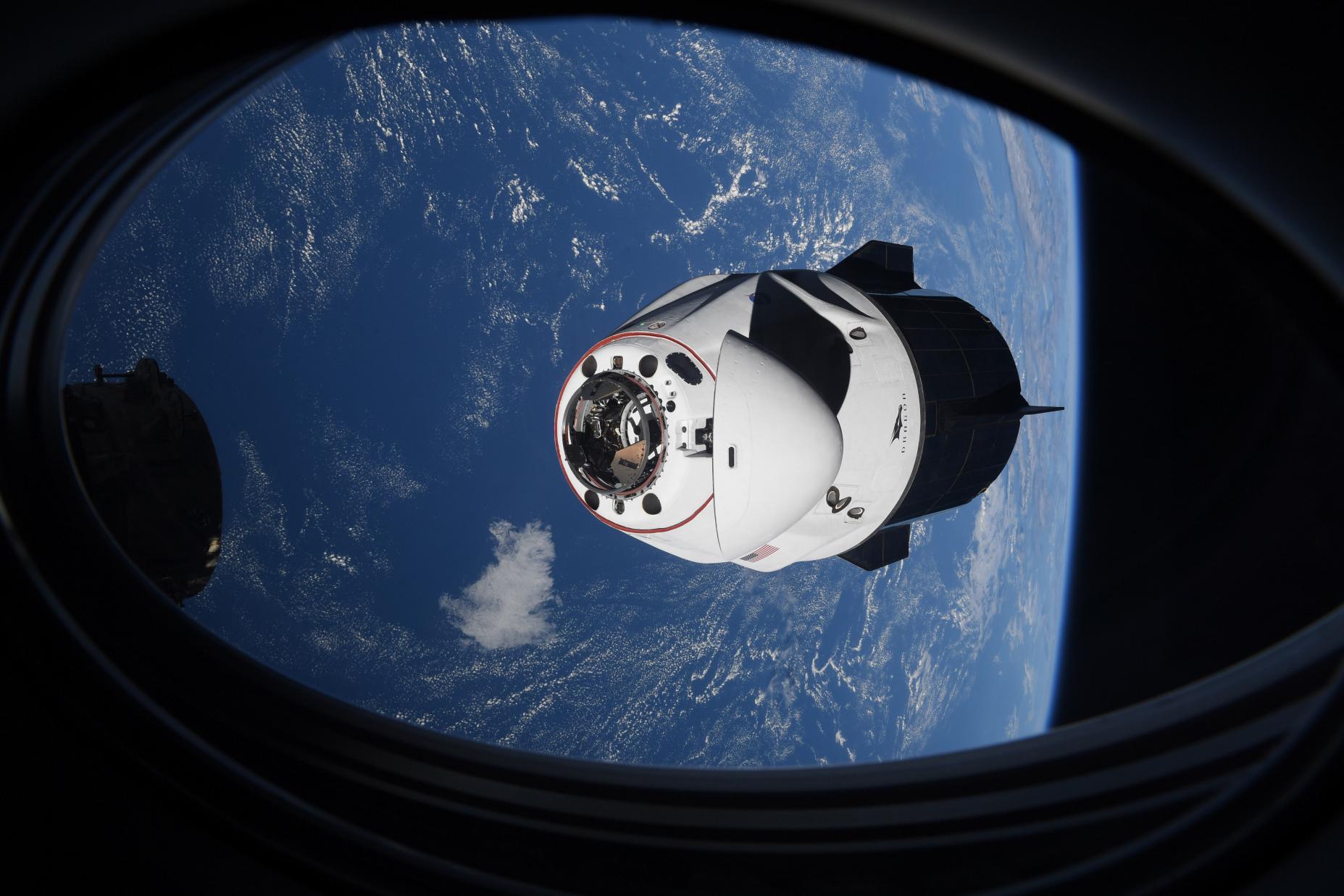
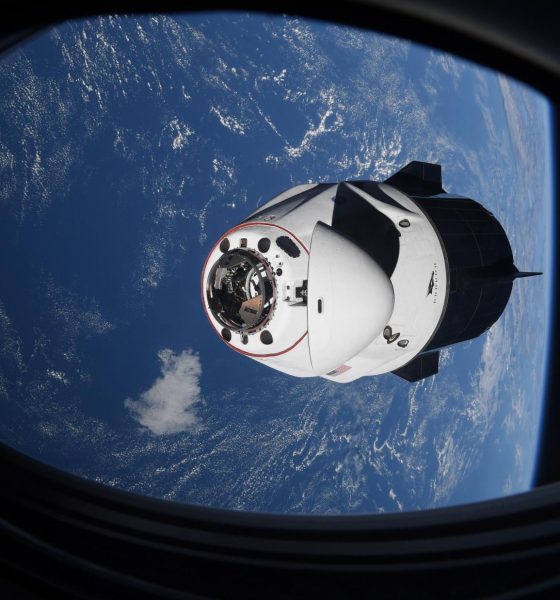
News
A 2021 SpaceX Odyssey: Dragon aces third astronaut launch, docks with space station
Early on Saturday morning, SpaceX Crew Dragon ‘Endeavour’ (capsule C206) – carrying four international astronauts – flawlessly docked with the International Space Station (ISS) for the second time in less than a year.
Capping off a smooth 24 hours of free-flight following an equally successful Falcon 9 launch on Friday, April 23rd, Dragon’s third crewed space station arrival was captured in spectacular fashion – thanks in part to the presence of a separate Crew Dragon vehicle already docked to the orbiting outpost. Recently swapped between the two ISS docking ports capable of supporting Dragons, Crew-1 NASA astronaut Mike Hopkins had – by far – the best view in the house of Crew-2’s space station rendezvous while looking out the window of the other Crew Dragon on orbit.
Former NASA flight director and Space Shuttle program manager Wayne Hale put it best, stating that SpaceX “[made] it look easy” with a “perfectly successful [Crew-2] launch and docking” – the company’s third astronaut launch and space station rendezvous since May 2020.
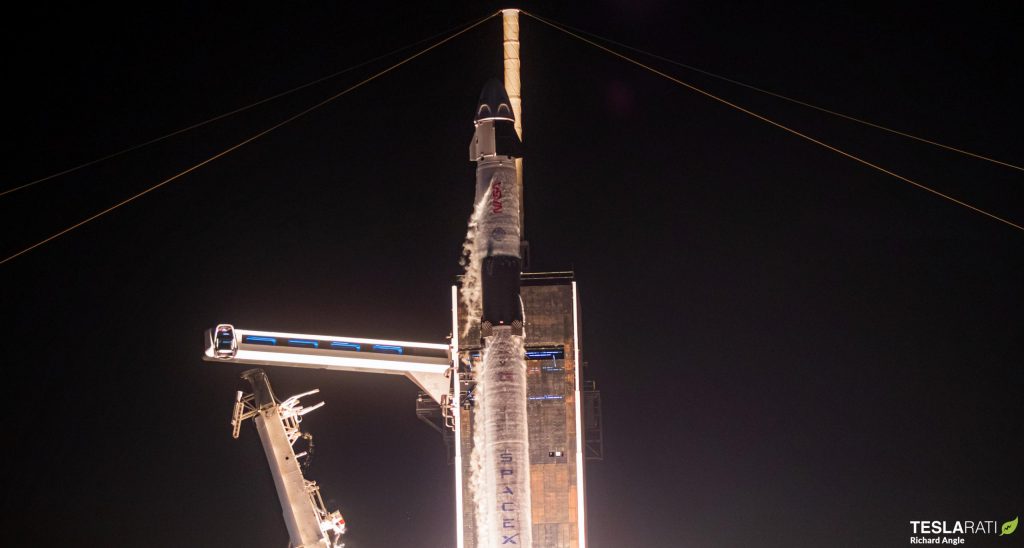
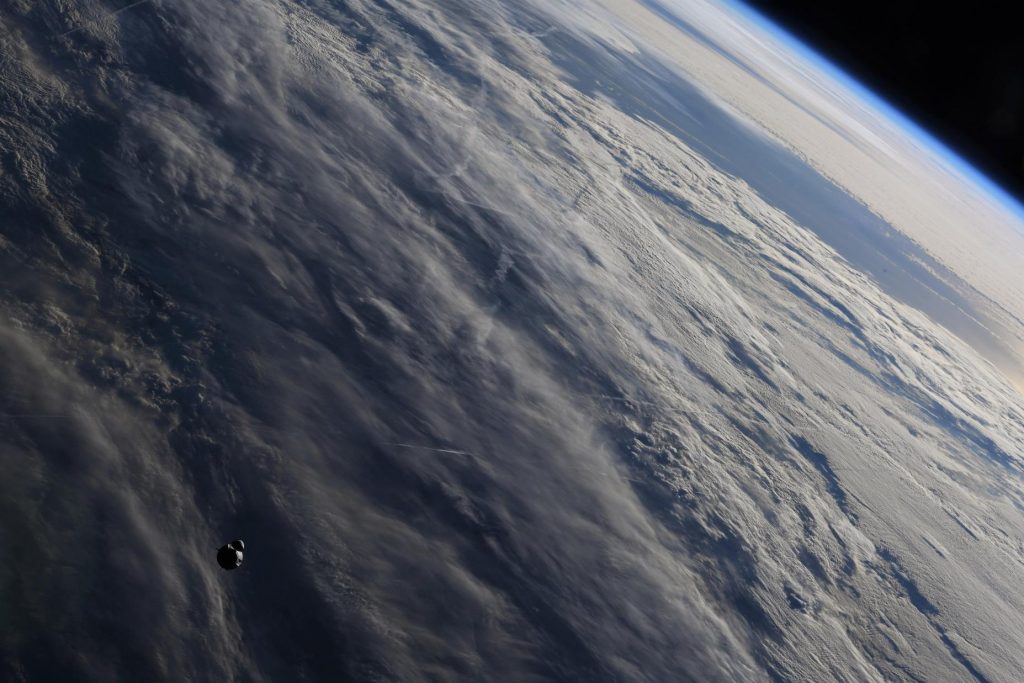
After a mere three days of delays – one for weather – from an April 20th (4/20) target set almost three months earlier, Crew Dragon lifted off on SpaceX and NASA’s Crew-2 mission shortly before dawn on April 23rd. As the rocket rapidly carried Dragon and its passengers from sea level to dozens of kilometers above the Earth’s surface, it sailed into sunlight, producing a spectacle that stretched across a vast swath of the pre-dawn sky as the sun lit up Falcon 9’s second stage exhaust plume.
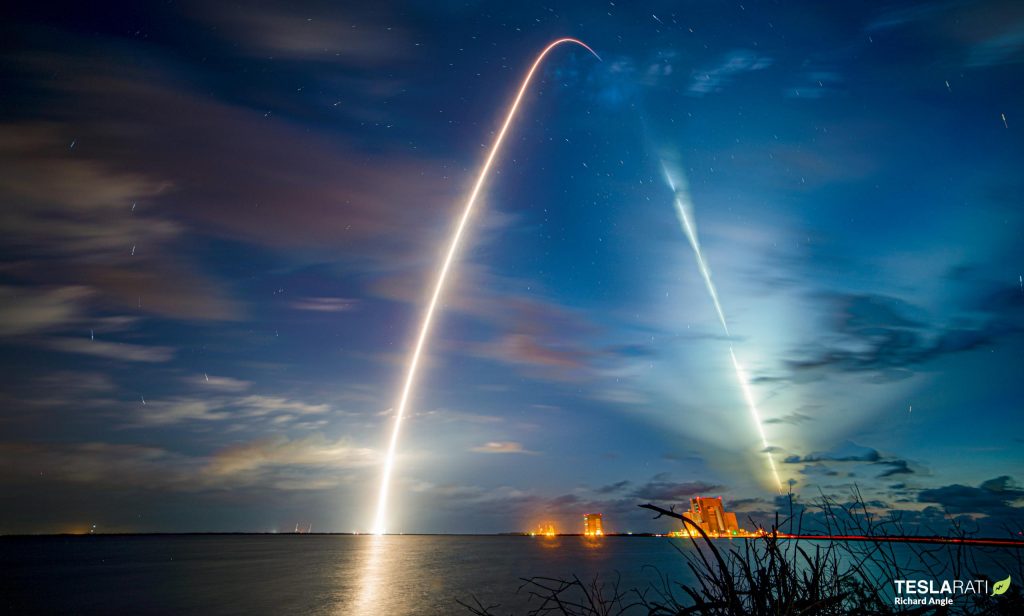
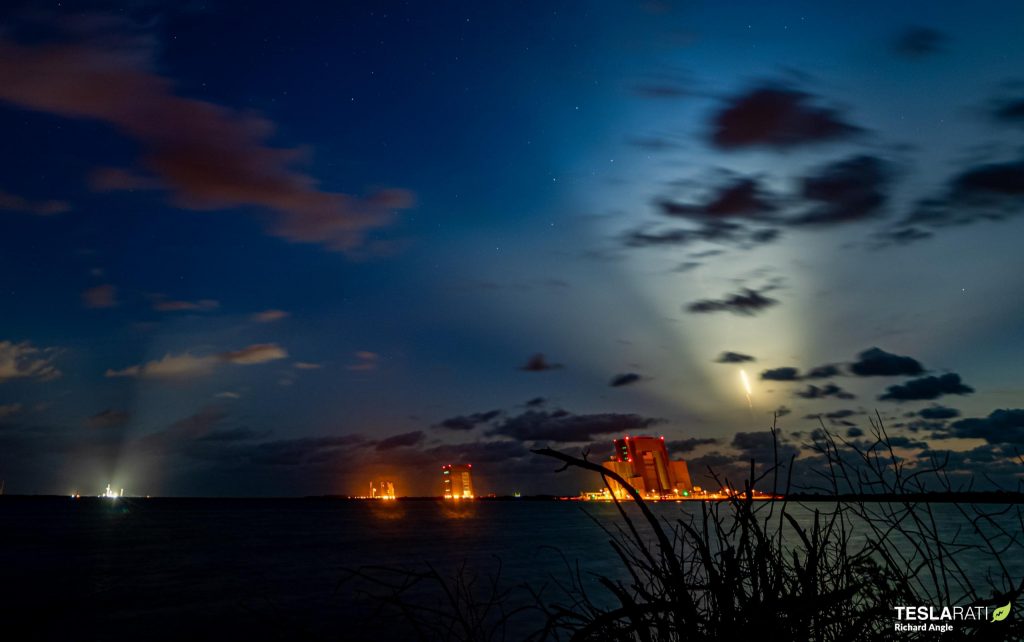
The four astronauts aboard the flight-proven Dragon were equally amazed as the inky black vacuum outside their spacecraft’s windows turned to blinding, unfiltered sunlight. One spectacle and a flawless trip into orbit on Falcon 9 behind them, French European Space Agency (ESA) astronaut Thomas Pesquet caught a glimpse of the rocket’s expended second stage effectively flying in formation a few miles below Crew Dragon.
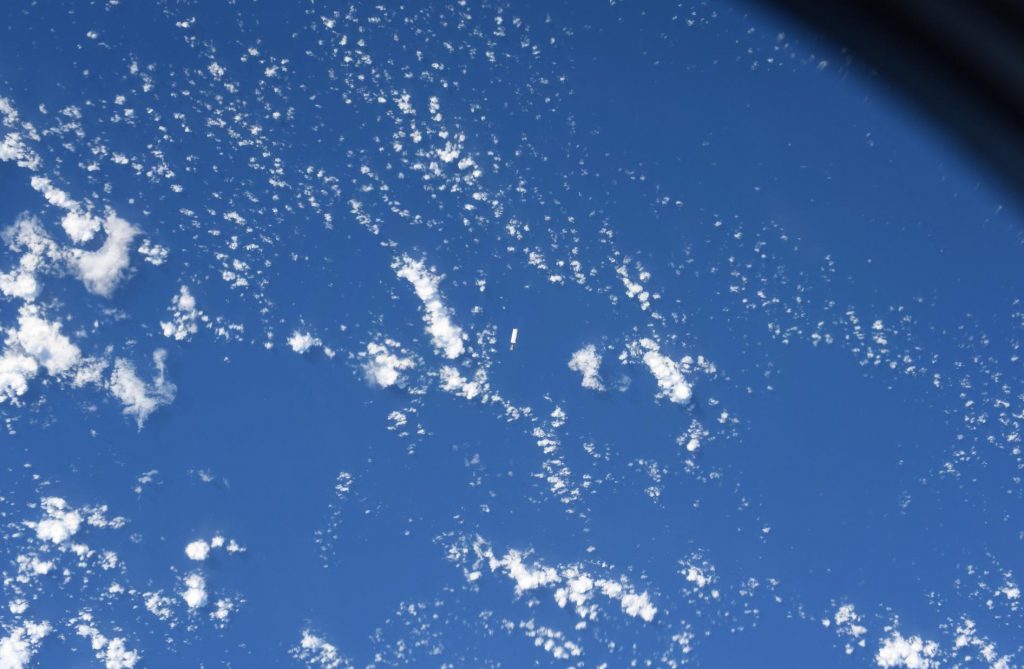
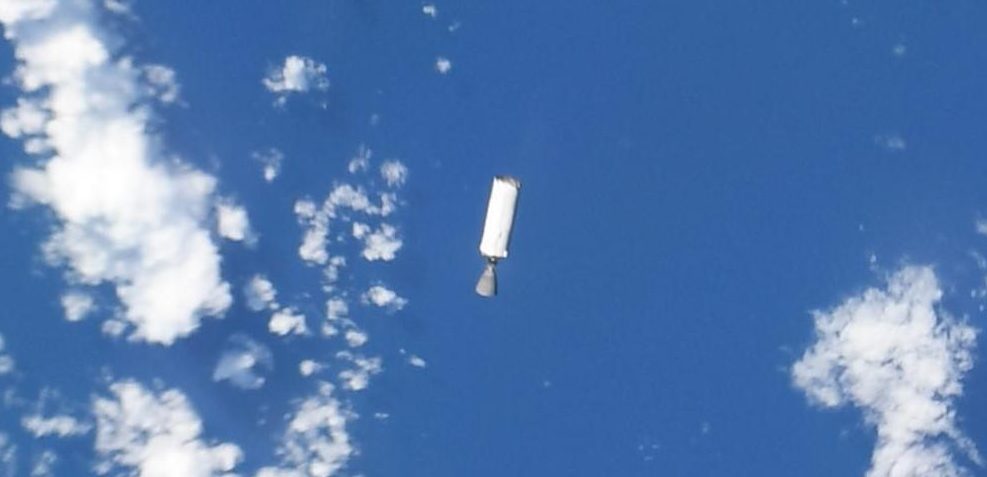
After almost exactly 24 hours on its own and five major Draco thruster orbit-raising and trajectory-matching burns, as well as an unwelcome collision avoidance warning that ultimately turned out to be a false alarm, Crew Dragon capsule C206 completed its second space station docking without delay around 5am on April 24th. Pesquet has published several dozen excellent photos of the flight and docking, offering the best look yet at what life aboard a free-flying Dragon is really like for the four astronauts packed into a volume – as he himself notes – roughly equivalent to a large car’s cabin.
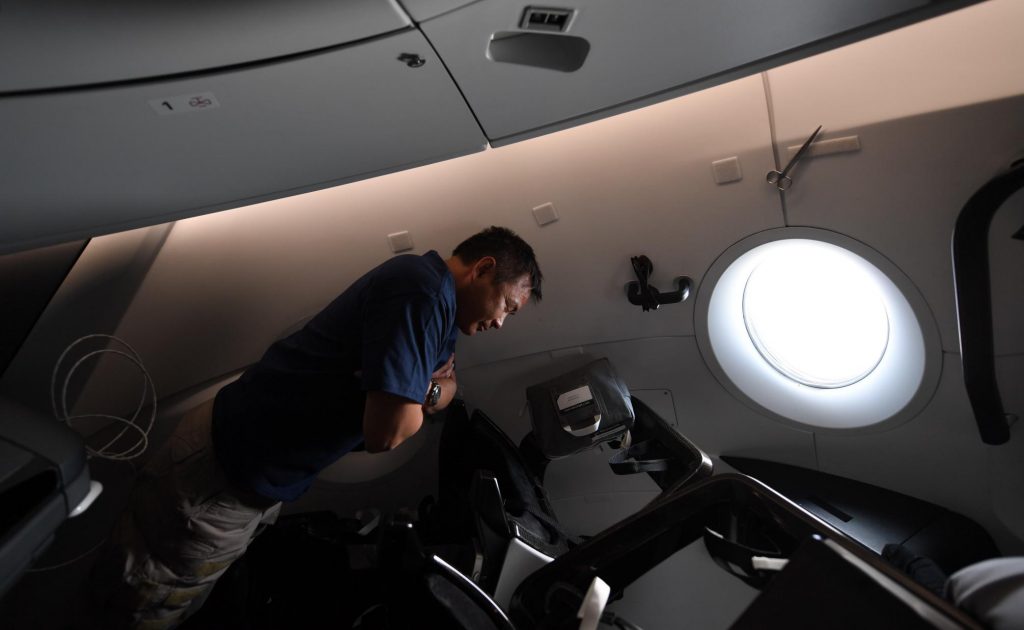
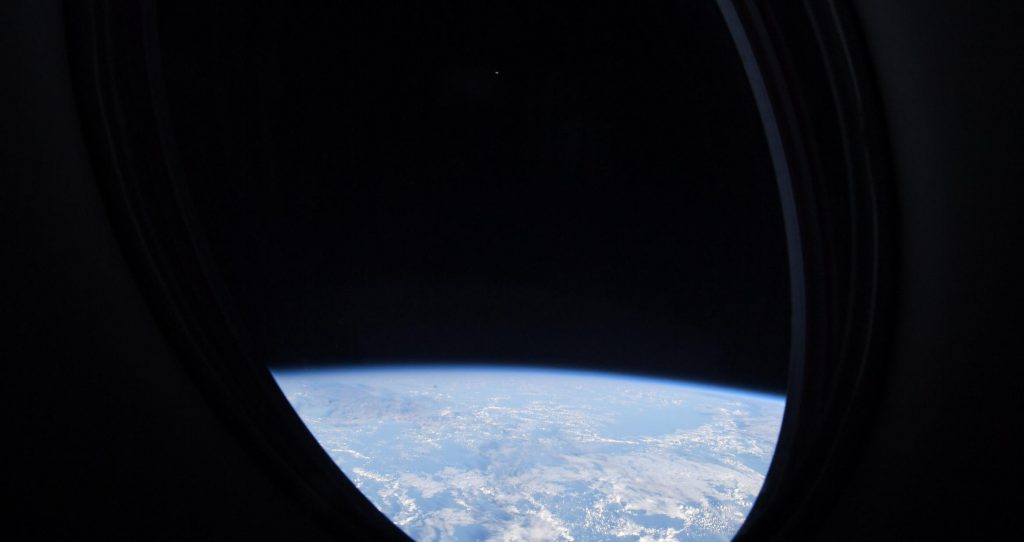
With its successful arrival, SpaceX – for the first time ever – had two separate Crew Dragon spacecraft docked to ISS simultaneously, marking the first of at least two more Dragon ‘hand-off’ milestones to come. Though NASA nominally planned to have Commercial Crew providers SpaceX and Boeing essentially take turns on operational astronaut ferry missions, the latter company’s Starliner spacecraft is more than a year and a half behind schedule and is unlikely to perform its first crewed demonstration flight before Q1 2022.
In other words, SpaceX has been forced to mature its Crew Dragon program much faster than expected to complete at least four back-to-back astronaut launches in ~17 months, while NASA is effectively dependent on the company to ensure the ISS remains fully crewed from May 2020 to sometime in 2022.
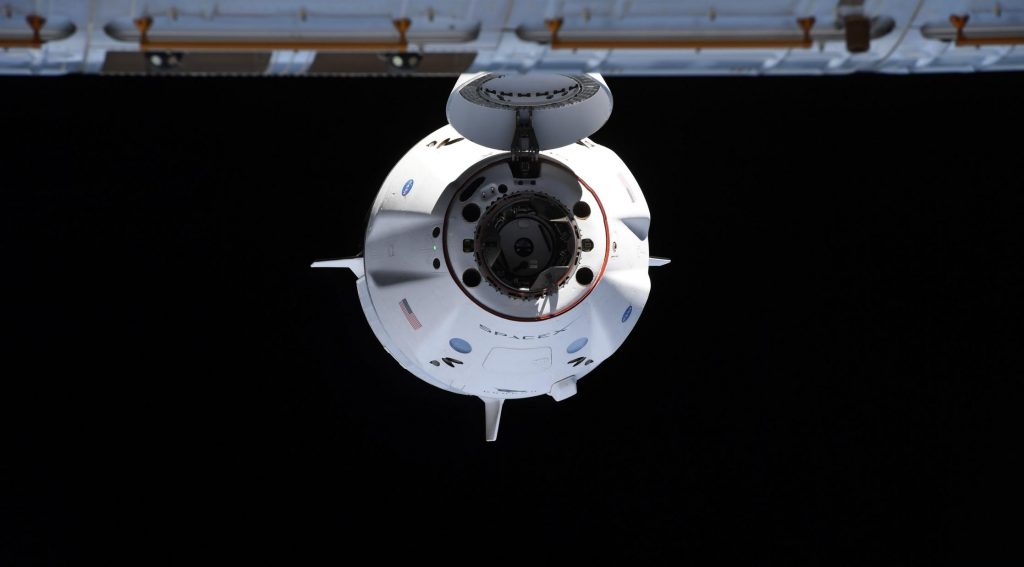
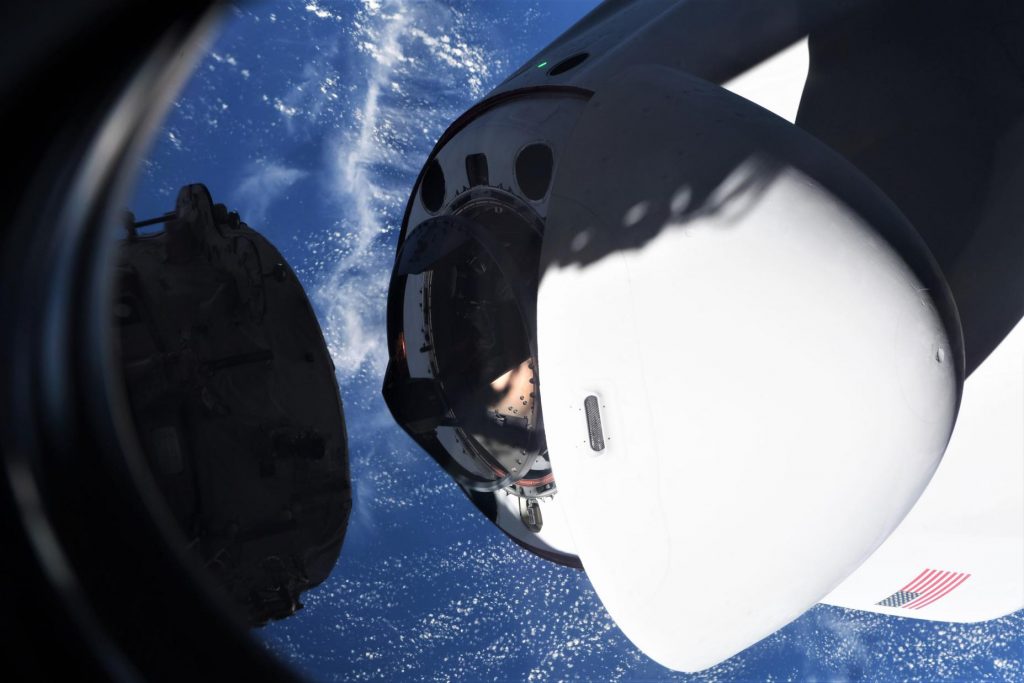
Following Crew-2’s smooth arrival, Crew-1’s Crew Dragon and its four-astronaut crew will return to Earth as early as April 28th. Sometime in October or November 2021, SpaceX will repeat that hand-off process once again when it launches Crew-3 and recovers Crew-2. There is a distant chance Boeing will have completed two successful test flights and be ready for Starliner’s operational astronaut launch debut in early 2022, but it’s arguably much more likely that SpaceX will also perform a third hand-off between Crew-3 and Crew-4 sometime in Q2 2022 before finally handing over the reins to Starliner.

News
Tesla FSD fleet is nearing 7 billion total miles, including 2.5 billion city miles
As can be seen on Tesla’s official FSD webpage, vehicles equipped with the system have now navigated over 6.99 billion miles.

Tesla’s Full Self-Driving (Supervised) fleet is closing in on almost 7 billion total miles driven, as per data posted by the company on its official FSD webpage.
These figures hint at the massive scale of data fueling Tesla’s rapid FSD improvements, which have been quite notable as of late.
FSD mileage milestones
As can be seen on Tesla’s official FSD webpage, vehicles equipped with the system have now navigated over 6.99 billion miles. Tesla owner and avid FSD tester Whole Mars Catalog also shared a screenshot indicating that from the nearly 7 billion miles traveled by the FSD fleet, more than 2.5 billion miles were driven inside cities.
City miles are particularly valuable for complex urban scenarios like unprotected turns, pedestrian interactions, and traffic lights. This is also the difference-maker for FSD, as only complex solutions, such as Waymo’s self-driving taxis, operate similarly on inner-city streets. And even then, incidents such as the San Francisco blackouts have proven challenging for sensor-rich vehicles like Waymos.
Tesla’s data edge
Tesla has a number of advantages in the autonomous vehicle sector, one of which is the size of its fleet and the number of vehicles training FSD on real-world roads. Tesla’s nearly 7 billion FSD miles then allow the company to roll out updates that make its vehicles behave like they are being driven by experienced drivers, even if they are operating on their own.
So notable are Tesla’s improvements to FSD that NVIDIA Director of Robotics Jim Fan, after experiencing FSD v14, noted that the system is the first AI that passes what he described as a “Physical Turing Test.”
“Despite knowing exactly how robot learning works, I still find it magical watching the steering wheel turn by itself. First it feels surreal, next it becomes routine. Then, like the smartphone, taking it away actively hurts. This is how humanity gets rewired and glued to god-like technologies,” Fan wrote in a post on X.
News
Tesla starts showing how FSD will change lives in Europe
Local officials tested the system on narrow country roads and were impressed by FSD’s smooth, human-like driving, with some calling the service a game-changer for everyday life in areas that are far from urban centers.

Tesla has launched Europe’s first public shuttle service using Full Self-Driving (Supervised) in the rural Eifelkreis Bitburg-Prüm region of Germany, demonstrating how the technology can restore independence and mobility for people who struggle with limited transport options.
Local officials tested the system on narrow country roads and were impressed by FSD’s smooth, human-like driving, with some calling the service a game-changer for everyday life in areas that are far from urban centers.
Officials see real impact on rural residents
Arzfeld Mayor Johannes Kuhl and District Administrator Andreas Kruppert personally tested the Tesla shuttle service. This allowed them to see just how well FSD navigated winding lanes and rural roads confidently. Kruppert said, “Autonomous driving sounds like science fiction to many, but we simply see here that it works totally well in rural regions too.” Kuhl, for his part, also noted that FSD “feels like a very experienced driver.”
The pilot complements the area’s “Citizen Bus” program, which provides on-demand rides for elderly residents who can no longer drive themselves. Tesla Europe shared a video of a demonstration of the service, highlighting how FSD gives people their freedom back, even in places where public transport is not as prevalent.
What the Ministry for Economic Affairs and Transport says
Rhineland-Palatinate’s Minister Daniela Schmitt supported the project, praising the collaboration that made this “first of its kind in Europe” possible. As per the ministry, the rural rollout for the service shows FSD’s potential beyond major cities, and it delivers tangible benefits like grocery runs, doctor visits, and social connections for isolated residents.
“Reliable and flexible mobility is especially vital in rural areas. With the launch of a shuttle service using self-driving vehicles (FSD supervised) by Tesla in the Eifelkreis Bitburg-Prüm, an innovative pilot project is now getting underway that complements local community bus services. It is the first project of its kind in Europe.
“The result is a real gain for rural mobility: greater accessibility, more flexibility and tangible benefits for everyday life. A strong signal for innovation, cooperation and future-oriented mobility beyond urban centers,” the ministry wrote in a LinkedIn post.
News
Tesla China quietly posts Robotaxi-related job listing
Tesla China is currently seeking a Low Voltage Electrical Engineer to work on circuit board design for the company’s autonomous vehicles.

Tesla has posted a new job listing in Shanghai explicitly tied to its Robotaxi program, fueling speculation that the company is preparing to launch its dedicated autonomous ride-hailing service in China.
As noted in the listing, Tesla China is currently seeking a Low Voltage Electrical Engineer to work on circuit board design for the company’s autonomous vehicles.
Robotaxi-specific role
The listing, which was shared on social media platform X by industry watcher @tslaming, suggested that Tesla China is looking to fill the role urgently. The job listing itself specifically mentions that the person hired for the role will be working on the Low Voltage Hardware team, which would design the circuit boards that would serve as the nervous system of the Robotaxi.
Key tasks for the role, as indicated in the job listing, include collaboration with PCB layout, firmware, mechanical, program management, and validation teams, among other responsibilities. The role is based in Shanghai.
China Robotaxi launch
China represents a massive potential market for robotaxis, with its dense urban centers and supportive policies in select cities. Tesla has limited permission to roll out FSD in the country, though despite this, its vehicles have been hailed as among the best in the market when it comes to autonomous features. So far, at least, it appears that China supports Tesla’s FSD and Robotaxi rollout.
This was hinted at in November, when Tesla brought the Cybercab to the 8th China International Import Expo (CIIE) in Shanghai, marking the first time that the autonomous two-seater was brought to the Asia-Pacific region. The vehicle, despite not having a release date in China, received a significant amount of interest among the event’s attendees.








